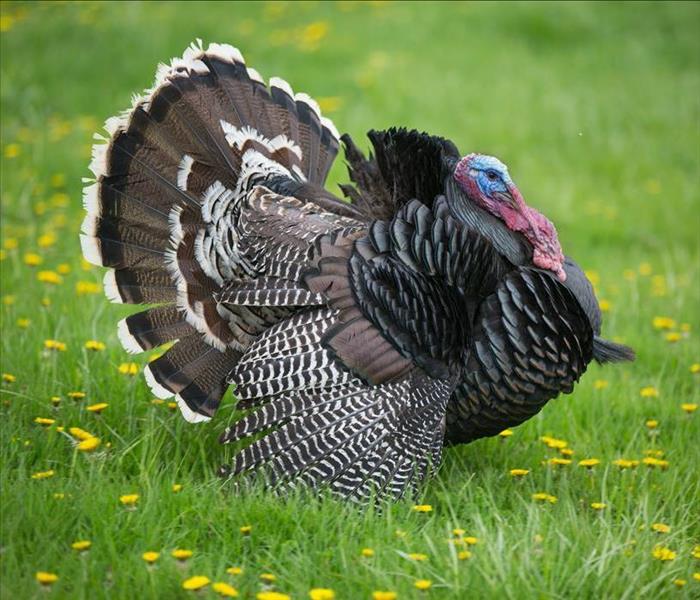Deep-Fried Turkey: Delicious Delight or Fiery Fiasco?
11/6/2023 (Permalink)
 Deep-frying a turkey carries a significant risk of fire, which can quickly turn a festive gathering into a nightmare.
Deep-frying a turkey carries a significant risk of fire, which can quickly turn a festive gathering into a nightmare.
Deep-frying a turkey has become an increasingly popular Thanksgiving tradition, and it's not hard to understand why. The result is a moist, flavorful bird with crispy skin that's absolutely mouthwatering. However, there's a dangerous side to this delicious endeavor. Deep-frying a turkey carries a significant risk of fire, which can quickly turn a festive gathering into a nightmare. In this blog, we'll explore the potential dangers of deep-frying a turkey and offer essential tips to ensure a safe and scrumptious holiday feast.
The Dangers of Deep-Frying a Turkey
Deep-frying a turkey can lead to a host of dangers, primarily fire-related. Here are a few of the main risks:
Oil Ignition: The most common cause of fires when deep-frying a turkey is the ignition of cooking oil. Turkey fryers typically use a large amount of oil, which, when heated to the required high temperatures, can become highly flammable. Even a small amount of spilled oil can ignite, leading to a fast-spreading fire.
Overfilled Pot: Overfilling the frying pot with oil is a recipe for disaster. When the turkey is lowered into the hot oil, it can displace the oil, causing it to overflow and potentially ignite, creating a hazardous situation.
Rapid Temperature Changes: Sudden changes in oil temperature can lead to violent boiling and splattering. If water or ice is introduced to a hot oil-filled turkey fryer, it can cause a significant flare-up or explosion.
Tips for Safe Deep-Frying:
Choose the Right Equipment:
- Invest in a turkey fryer specifically designed for the purpose. These units come with safety features such as a stable base and a thermometer.
Select the Right Location:
- Set up your turkey fryer outdoors on a flat, non-combustible surface, well away from structures, trees, and anything else that could catch fire. Never use a fryer in an enclosed space like a garage.
Measure the Oil:
- To avoid overfilling, determine the right amount of oil by placing the turkey in the pot and filling it with water until the turkey is submerged. Then, remove the turkey and mark the water level. Dry the pot thoroughly before adding the oil to the marked level.
Thaw the Turkey:
- Ensure that your turkey is completely thawed and dry before frying. Ice or moisture can cause oil splatters.
Slow and Steady:
- Lower the turkey into the hot oil slowly and cautiously to prevent oil from splattering. It's best to wear protective gear, such as gloves and eye protection.
Keep an Eye on the Temperature:
- Use a reliable thermometer to monitor the oil temperature. Maintain a steady temperature, and be prepared to adjust the heat source as needed.
Have Safety Equipment on Hand:
- Have a fire extinguisher nearby, and make sure you know how to use it. It's also a good idea to have a fire-resistant oven mitt and a lid to cover the pot in case of a small flare-up.
Deep-frying a turkey can be a delicious and satisfying way to celebrate Thanksgiving, but it's crucial to recognize and mitigate the potential risks. By following these safety guidelines and being vigilant, you can enjoy a succulent turkey without the risk of turning your holiday into a fiery fiasco. Safety should always be the main ingredient when it comes to deep-frying your Thanksgiving bird.






 24/7 Emergency Service
24/7 Emergency Service